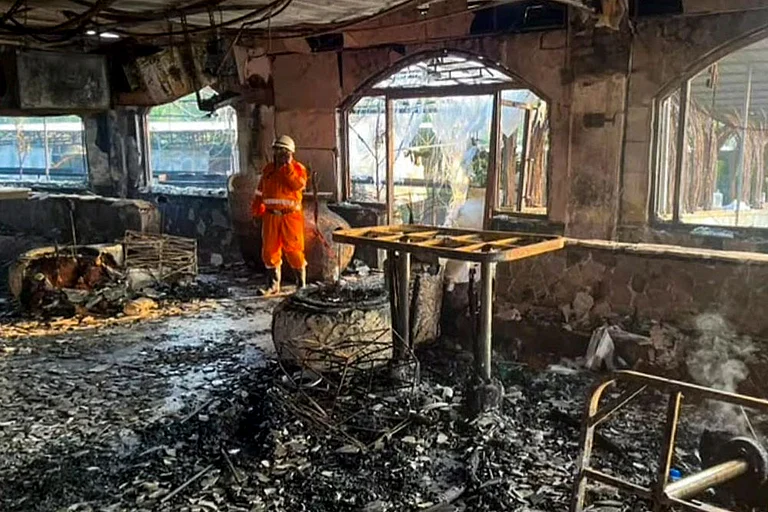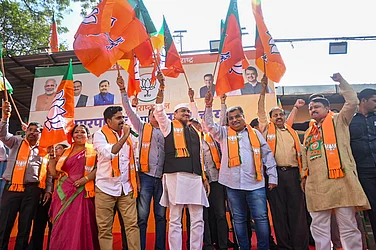The question of ‘Opposition unity’ has been on the minds of many people across the length and breadth of the country. Months before the recent meeting hosted by the Opposition parties in Patna on June 23, the CPI (ML) Liberation, at its Party Congress in the same city in February, had placed this on the top of its agenda. It had managed to get together an impressive array of parties, including the Indian National Congress (INC) and leaders of Mahagathbandhan (MGB), in a political convention that was held during the Party Congress.
The current round of meetings can be seen as part of the same continuum where different non-mainstream parties as well as citizens groups, who have no direct stakes in taking power, have been actively trying to push for some kind of unity among non-BJP parties. We saw powerful interventions by such citizens’ forums during the elections in West Bengal in 2021 (the ‘No Vote to BJP’ campaign) and then recently in Karnataka (the campaigns of Bahutva Karnataka and Eddelu Karnataka).
Despite such efforts, the much sought after Opposition unity remains elusive. There are at least three sets of issues that need to be considered if we want to understand the nature of obstacles in the achievement of this feat.
The first set of issues is more general and relates to the wider, global context of the rise of the New Right. It is important to understand that like fascism, the rise of the New Right has been the consequence of the crisis of hegemony of traditional parties and traditional ways of doing politics – both of the Left and of the Right. In India, it was the unravelling of the Congress party and the ‘Nehruvian consensus’ that began in the late 1960s and came to fruition in the 1990s that opened up the space for the rise of Hindutva in its new avatar. The unravelling began with the breaking away of backward and so-called ‘dominant agrarian castes’ from Congress hegemony in the 1960s and during the Janata Party regime (1977-1980). It was during the Janata Party regime that the Mandal Commission was constituted, which paved the way for the upsurge of lower caste and Dalit parties like the Janata Dal, Samajwadi Party (SP), the Bahujan Samaj Party (BSP), Rashtriya Janata Dal (RJD), in the 1990s, which virtually wiped out the Congress from states like Uttar Pradesh and Bihar.
If one looks at the changing political map of the country through these decades, it becomes quite clear that all the other regional, OBC (Other Backward Classes), and Dalit parties came up in opposition to the Congress. Their main struggle was against the hegemony of the national and ‘secular’ (that is, also caste-blind) Congress, which also made most of them open to alliances with the BJP-led National Democratic Alliance (NDA) in the late 1990s. Many important regional parties that had earlier been part of the non-Congress United Front government (1996-98) very easily became part of the NDA.
This history still haunts the Opposition today and the antipathy of many of the parties towards the Congress is further reinforced by the arrogance of the Congress that still sees itself as the only party entitled to rule. All other rising new forces have been routinely dubbed ‘BJP’s B team’ by the Congress at some point of time or the other. It is worth recalling that despite being wiped out in UP, as recently as the last elections in February-March 2022, the Congress had unilaterally decided to contest all the seats without making any attempt at opening channels of communication with the opposition alliance led by the SP and the Rashtriya Lok Dal (RLD). Any other party doing the same would have been dubbed ‘BJP’s B team’ by the Congress. Its prevarications on the issue of the Delhi ordinance that subverts federalism constitute another instance of this attitude.
The Congress seriously needs to reinvent itself and reassess its role in the new and changed conditions. Then alone will it be able to win the trust of the other Opposition parties and play a meaningful role as a unifier. That it has belatedly taken a stand on the Delhi ordinance issue is certainly welcome though it still hesitates to mention Delhi by name.
The second set of issues has to do with the non-Congress parties. The problem is that most of them including the Bahujan and Dalit parties that emerged in the 1990s, as indeed the regional parties like the Telugu Desam Party (TDP) or the Telangana Rashtra Samiti (now Bharat Rashtra Samiti—BRS), the Shiv Sena, or the Nationalist Congress Party (NCP), to name only some, are really family fiefdoms rather than political parties in any serious sense of the term. They have little by way of a political vision or a programme and are purely in the business of the pursuit of power, for which they are ever willing to sell themselves to the highest bidder.
This situation has been further aggravated during the neoliberal decades when, evacuated of politics, virtually all political parties from the Left to the Right, became indistinguishable as far as policies were concerned. They simply surrendered to the logic of neoliberalism, in the belief that ‘there is no alternative’ to it.
Perhaps the only party that has come forward with a very clear programme, which directly challenges the neoliberal logic is the Aam Aadmi Party (AAP) that insists on strengthening public education and health and on subsidising water and electricity up to a certain limit. Thankfully, some of the parties including Congress, have lately taken a leaf from AAP’s book to focus, especially since the Karnataka elections, on issues concerning livelihoods while moving away from fighting on the BJP’s ‘Hindu-Muslim’ and ‘secular-communal’ turf. The recognition is dawning slowly that without a programmatic basis, no opposition unity can be effective. If Opposition unity is seen simply as an ‘anti-Modi’ front, it is once again likely to play into the hand of the ruling party – suggesting that issues really don’t matter and in the end, it is simply Modi versus the rest. For that reason, it is perhaps more fruitful to try to maximise coordination, if possible alliances, at the state level.
The third set of issues has to do with the rudderless way in which the Opposition parties have been functioning, where they often wake up on the eve of elections to put together some sort of ramshackle alliance. The present BJP, let us remember, is in election mode 24x7 and the Opposition will only be deluding itself if it thinks it can present a challenge to the regime in such a lackadaisical way. We would do well to remember that both the United Progressive Alliance-I (UPA-I) , as well as the National Advisory Council (with representation of social movements) formed to advise the government, too were put in place after the elections. Opposition unity can be meaningful only when it is linked to mass struggles and mass mobilisations — be they on issues of price rise and federalism or independent ones like the farmers’ struggle and the anti-CAA struggle.
(Aditya Nigam, formerly with the Centre for the Study of Developing Societies, is an independent political theorist based in Delhi.)

























